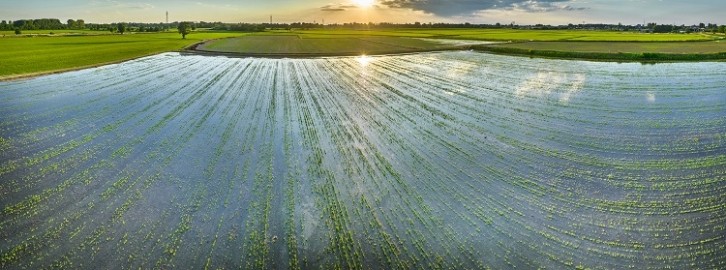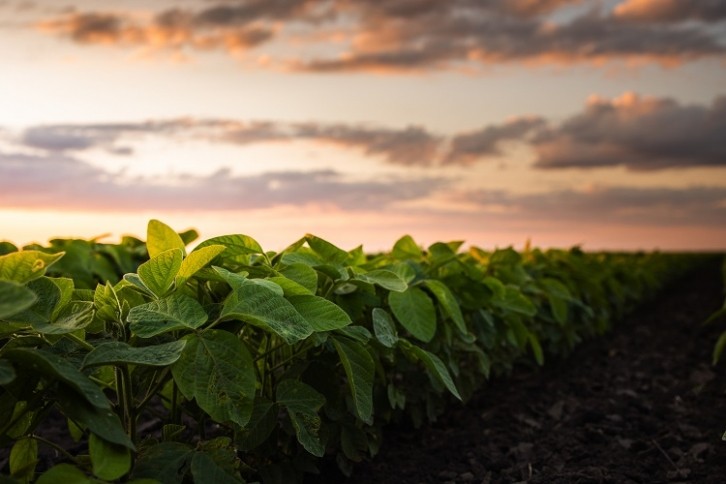In 2020, Unilever pledged to take a position €1bn in local weather, nature and useful resource effectivity initiatives over the next decade, with the goal of ‘remodeling’ the best way its merchandise are made and attain finish of life. The fund aligns with the Knorr-to-Magnum maker’s ambition to attain web zero emissions by 2039.
A key piece of that funding lies in integrating regenerative agriculture rules into crop cultivation for its meals substances. Though a transparent definition of ‘regenerative agriculture’ doesn’t but exist, Unilever has established its personal.
For the Knorr-to-Magnum maker, its Regenerative Agriculture Ideas embody practices which have optimistic results on soil well being, water and air high quality, carbon seize and biodiversity. Guaranteeing enough yield and dietary high quality, whereas maintaining useful resource inputs as little as doable, can be central to its requirements.
Having established its regenerative agriculture rules, Unilever arrange 4 initiatives in Europe and the US. One 12 months on, and the primary environmental influence outcomes are in. It’s ‘nonetheless early days’, based on the FMCG, however the case research recommend there’s ‘floor for optimism’.
Enhancing water and soil administration in Spain
Within the Badajoz area in Spain’s southwest, farmers provide Unilever with tomatoes for its Knorr model, which makes soups, seasonings, sauces and bouillon cubes.
The realm struggles with decreased rainfall and depleted underground water reserves, which was impetus for Knorr to accomplice with tomato provider Agraz to assist farmers within the area address the consequences of local weather change.
The venture makes use of sensors and soil probes to higher inform farmers in regards to the quantity of water wanted for irrigation, with the goal of saving cash and constructing resilience into their manufacturing techniques.
After one full 12 months, Unilever is recording a 37% lower in GHG emissions (kg of CO2eq) per kg tomatoes compared to earlier than the venture. Outcomes additionally recommend a rise in soil natural matter and fertility (from 1% in 2020 to 1.27% in 2022).
Understandably, temperature can have an effect on outcomes – excessive temperatures and droughts improve the necessity to irrigate, and thus the GHG emissions related to it. However FoodNavigator understands that in each regular and excessive weather conditions, Unilever’s strategy would scale back water footprint influence.
In a second parallel trial, three farmers had been inspired to plant wildflower borders to extend biodiversity. On these farms, a powerful 173% improve in pollinators was recorded, in addition to a 27% improve in wildflower range.
Tackling water air pollution in Italy
In Lombardy, Italy, thought of one of many principal European areas for rice manufacturing, Knorr has partnered with provider Parboriz to look at methods of lowering rice air pollution and GHG emission related to rice farming, whereas boosting biodiversity.
Irrigation and drainage, which is central to rice cultivation, have typically been related to lack of water high quality attributable to salt, pesticides and fertilizer runoff.
Knorr examined and evaluated agricultural practices on 4 demonstration farms masking 900 hectares within the area. Not one of the rice grown was processed or utilized by Unilever, however the learnings and outcomes had been ‘so spectacular’ that the practices had been rolled out to 200 different rice farmers within the space this 12 months.
The venture decreased the quantity of chemical reside present in water, together with a 78% discount in pesticide residue, a 62% discount in herbicide residue, and a 78% discount in fungicide residue.
A rise within the presence of pollinating bugs, amphibians, and birds, specifically aquatic birds, was additionally noticed.
The right administration of the vegetation current on the banks of the rice fields proved basic, along with the fixed presence of water in some furrows of the rice subject through the rising season. This encourages the event of pure cycles, so to permit nature itself to assist and enhance rice manufacturing.
Chopping methane emissions from rice cultivation
Rice is a big contributor to GHG emissions, estimated to be accountable for 10% of worldwide methane emissions. This happens when soil is flooded, as it’s in rice manufacturing, creating low-oxygen situations during which methane-producing micro organism thrive.
The rice makes use of a ‘chimney-like’ plant tissue to permit oxygen to maneuver up and down the roots. The methane-producing micro organism within the soil use the identical tube to ship methane up into the ambiance.
In an effort to lower methane emission output, Knorr partnered with rice provider Riviana and the College of Arkansas within the US. The venture included furrow irrigation and alternate wetting and drying, which reduces the time the land stays underwater. This decreased the methane launched from the flooded rice fields. Water saving was additionally achieved, and crop high quality accredited.
Particularly, the venture noticed 76% much less methane (kg of CO2eq per kg rice) launched, and 48% much less GHG emissions (kg of CO2eq per kg rice) compared to earlier than the venture.

FoodNavigator understands you will need to handle any trade-offs and ship a holistic strategy when making use of various wetting and drying practices. Whereas this follow can considerably lower methane emissions, it additionally means lowering the time when fields are flooded.
From mid-November to the top of January for instance, flooded fields present habitat for migrated birds. All through the venture implementation, it was vital to make sure the presence of pure habitats for migratory birds was maintained, all of the whereas lowering total methane emissions.
Safety the soil throughout soybean manufacturing
Within the US, soybean oil is the first ingredient in Hellmann’s Actual Mayonnaise product. In Unilever’s largest regenerative agriculture venture thus far – incorporating 523 farmers and greater than 35,000 hectares of canopy crops – the corporate has teamed up with Sensible Farmers of Iowa, PepsiCo and soybean provider ADM to higher defend soil well being.
“The programme is developed round three pillars that may be replicated for various points with completely different crops and places,” defined Stefani Millie, senior supervisor, Exterior Affairs and Sustainability at Unilever. “The three pillars – monetary help, technical help and peer assist/studying – are basically the blueprint for a way programmes are being arrange in North America.”
Certainly, on this venture farmers are supplied with monetary and technical assist to plant non-commercial cowl crops to guard the soil from the depleting impact of opposed climate, similar to wind and rain, in between planting.
Findings recommend 14% much less nitrate run off water has been achieved in comparison with comparability fields, and 6% much less GHG emissions.
Regardless of these wholesome outcomes, challenges stay, similar to encouraging ‘center adopters’ to make modifications to their farming practices. For a farmer to change to soil well being practices, similar to no-till and canopy crop, it requires a change in the best way they farm. And the typical age of a US farmer is 57.5 years they usually have been on their present farm for a mean of 21.3 years.
What subsequent? ‘It’s time to go huge’
However Unilever stays optimistic. The environmental influence outcomes from its 4 initiatives provides ‘hope’, based on Soubeiran, who mentioned the corporate is conscious there’s ‘extra to be finished’.
“As an business, we have to work collectively to scale regenerative agriculture rules which requires an aligned framework, technical and monetary assist for farmers and robust partnerships.
“This additionally requires governments to assist the shift to and upkeep of regenerative agriculture practices by serving to to de-risk the transition, implementing insurance policies to incentivise, and offering technical help,” he instructed FoodNavigator.

For Unilever, these preliminary outcomes are the ‘first indication’ that the implementation of regenerative agriculture rules at scale can convey resilience to the provision of its meals substances, in addition to advantages to farmers, and cut back the detrimental impacting of farming of the atmosphere.
Plans to rollout extra initiatives are underway: by the top of the 12 months the corporate goals to have round 300,000 hectares contracted, and by 2030 it plans to have expanded to greater than 1,000 programmes. “The time for pilots is over,” mentioned Unilever vitamin president Hanneke Faber. “It’s time to go huge.”

